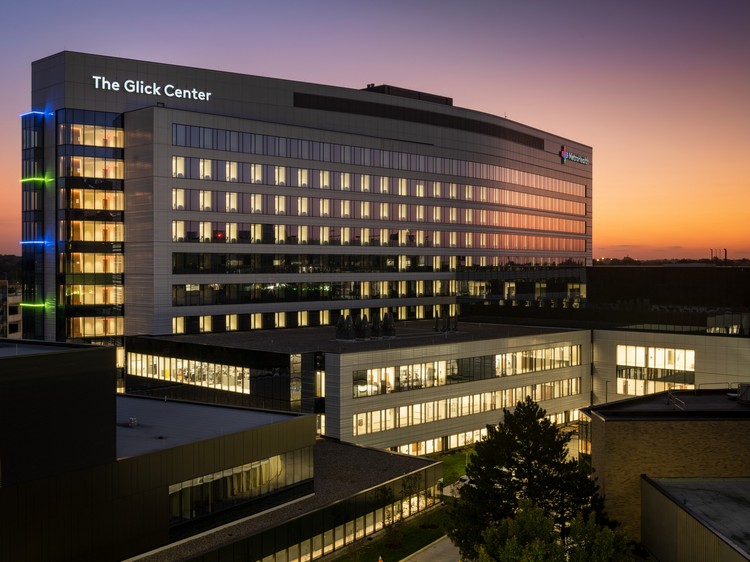MetroHealth System’s replacement hospital, The Glick Center, in Cleveland, Ohio has recently been completed. The 11-story acute care hospital is in the Clark-Fulton neighborhood, a community the healthcare system has served for more than 150 years.
The design of the building drew inspiration from historical photos of the first hospital, which had originally been set in a park. The white terracotta exterior façade reflects the traditional material used on the original hospital at the beginning of the 20th century and was reimagined using contemporary building methods.
The interplay of light and shadow found in tree canopies is abstracted in the design through the texture of the building cladding, numerous skylights and textured wall tile. The building responds to the lack of green space in the Clark-Fulton neighborhood by becoming a ‘Hospital in a Park’ and ‘Hospital as a Park’ to support informal park-like activities, through visual cues and the inclusion of a dedicated performance space in the public lobby for community performances. Additional park symbolism includes green grass-like carpeting with undefined edges, cartography in the terrazzo, picnic patterns in the servery and a large simulated window with views of the Ohio landscape.
The 288 universal, private patient rooms provide flexibility as changes in acuity and operations occur over the building’s life. Fixed monuments are avoided in an open floor plate, and traditionally overly customized space is replaced by flexible open plans that also promote visibility and ease of access.
Sustainability planning sessions and a resiliency assessment resulted in significant energy savings, gas reduction, C02 reduction and MMBtu reduction. The master plan considered the impact of sound, exhaust smells and lighting (both for safety and elimination of light pollution) emanating from the building. Inside, health and wellness are supported through advanced air filtration, daylighting, lighting controls and additional essential systems power.
The new hospital will be LEED certified and seek Well Building certification.
A collaborative project team was led by HGA Architects and Engineers and Turner Construction. Over 25 local firms, such as Bostwick Design Partnership and Karpinski Engineering, contributed to the project; 10 of the local partners were diverse firms.
Photo courtesy of HGA/Nic Lehoux Architectural Photography





